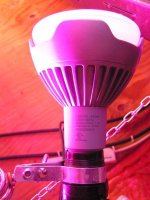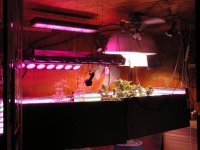M
MichiSin
I was wondering if there were any grows or studies (spec here) where someone mimicked actual daylight hours to match up with either their environment or the environment where the genes came from.
I guess temp and humidity would be nice additions, you know to bring out those autumn colors.
Im very curious to know because a cycle of 12/12 every single day is odd to me and as we know dark hours are just as important as sunlight for the flowering girls.
It only reaches 12 hours in my area next month it was D13:14/N10:46 today and D13:17/N10:43 the day before. Thats a 3 minute decrease in daylength (nightlength is different and defined by the moons activity)
Any outdoor growers below 44° know when they usually start flowering in Michigan?
I guess temp and humidity would be nice additions, you know to bring out those autumn colors.
Im very curious to know because a cycle of 12/12 every single day is odd to me and as we know dark hours are just as important as sunlight for the flowering girls.
It only reaches 12 hours in my area next month it was D13:14/N10:46 today and D13:17/N10:43 the day before. Thats a 3 minute decrease in daylength (nightlength is different and defined by the moons activity)
Any outdoor growers below 44° know when they usually start flowering in Michigan?



 , but it is well worth it; yield will be much better, you will no longer have fluffy buds and the plants will branch out a lot more.
, but it is well worth it; yield will be much better, you will no longer have fluffy buds and the plants will branch out a lot more.
